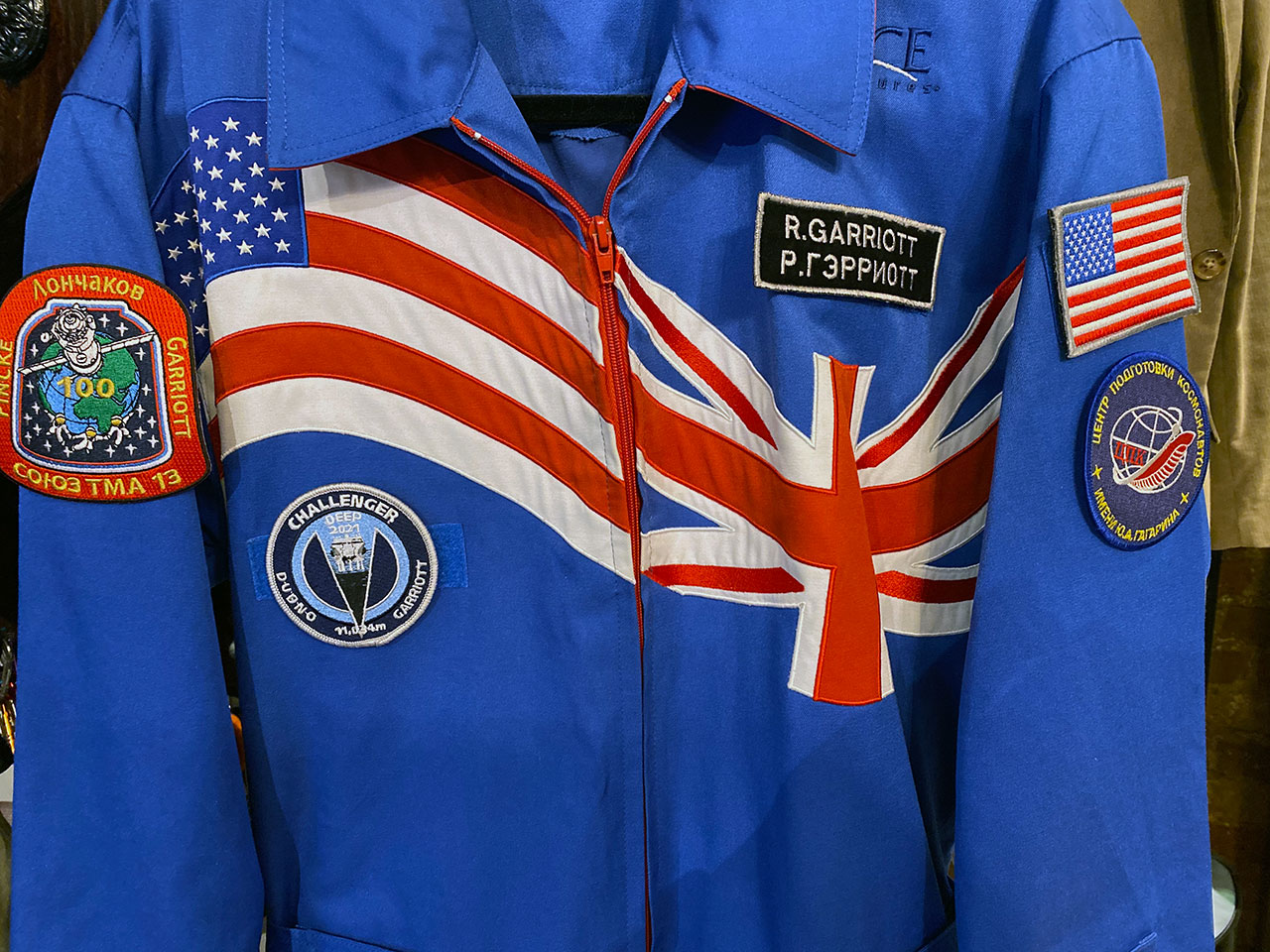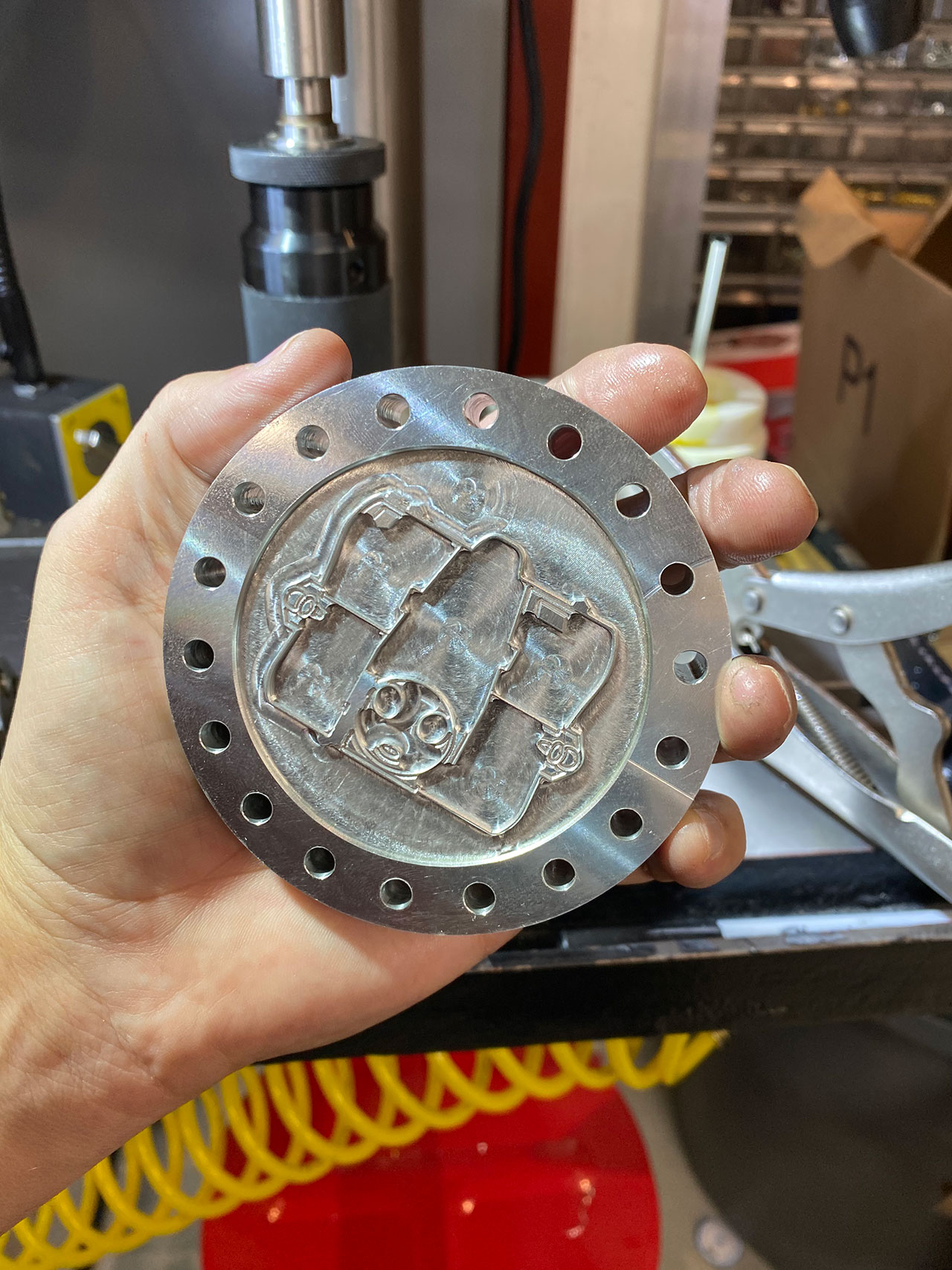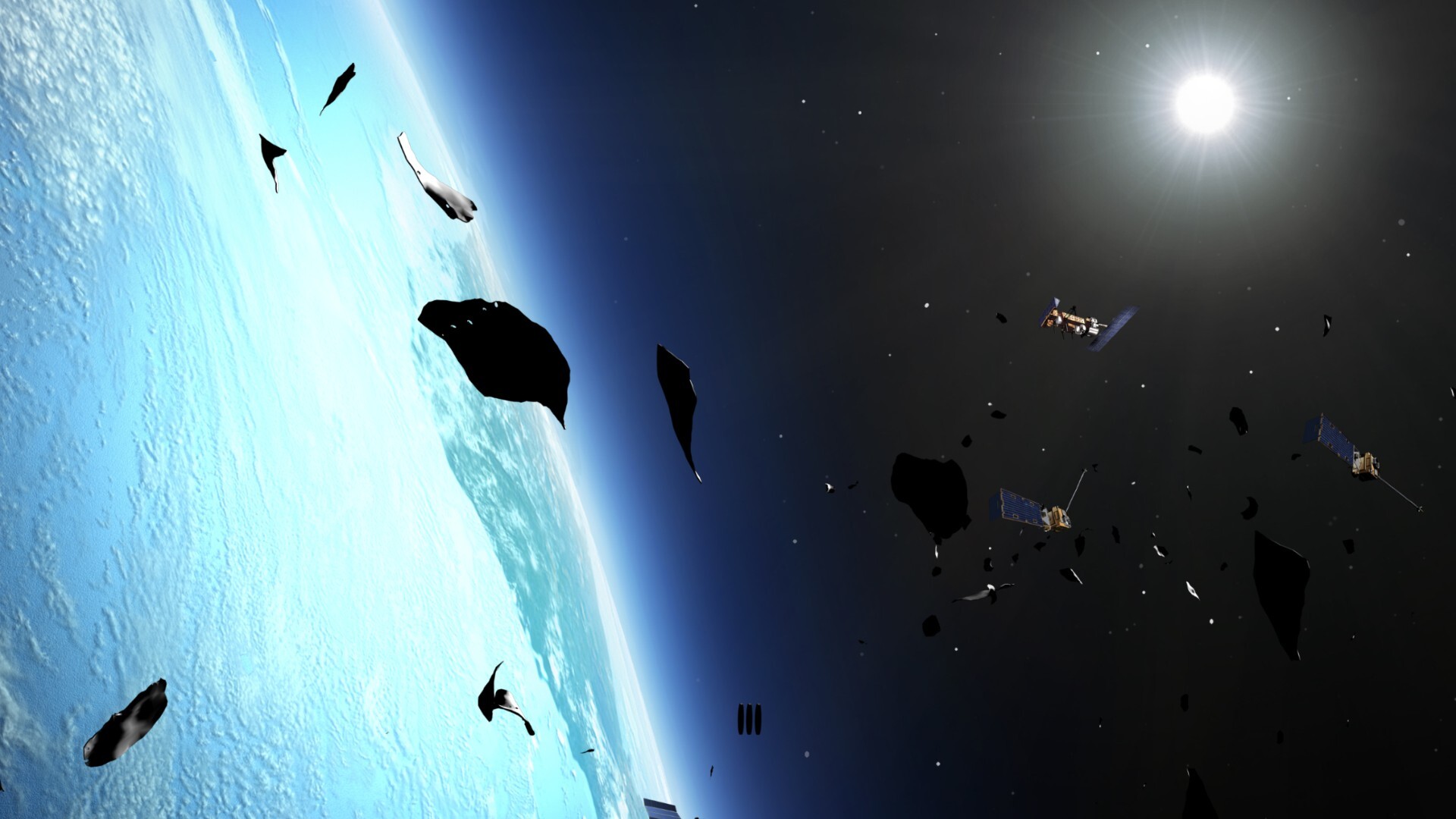Q&A: Private astronaut Richard Garriott set to dive to lowest point on Earth

Richard Garriott thought he would have been there and back by now.
The son of a NASA astronaut and a video game pioneer who funded his own trip to the International Space Station in 2008, Garriott was set to dive to Challenger Deep in the Mariana Trench, the lowest point on Earth, in June, just days after another space explorer, NASA's Kathy Sullivan, became the first astronaut and the first woman to do so.
But then a call came the night before Garriott's departure.
"I was crushed because they had a major mechanical failure," Garriott told Space.com, "nothing that was dangerous for the crew or the submarine, but it was an electrical system, a junction box on the exterior that they really wanted at 100% before they dove any more. So that meant taking the entire submarine and ship back to Hawaii to remanufacture a couple of parts and retest those couple of extra parts. And now we're back in business, so I'm going to be the first dive on this sequence."
Photos: Private space traveler Richard Garriott, a 'man on a mission'
Garriott is now scheduled to begin the 12-hour dive aboard the "Limiting Factor," the first commercially certified full-ocean-depth deep submergence vehicle, on Monday (March 1). An avid adventurer and the president-elect of the venerable The Explorers Club, Garriott is set to become the first person to orbit Earth, travel to the deepest part of the ocean and traverse both poles of the planet.
"I have been to space and I've been to both the North and South poles. So even though Kathy beat me going space to deep, she has not been to both poles. So, I will be the first male to go space to deep, and the first person to go who has traversed Earth as well as the deep," Garriott said. "Not that you have to agree that any of that matters, which of course, fundamentally, it doesn't really, but it's kind of fun."
Breaking space news, the latest updates on rocket launches, skywatching events and more!
Space.com spoke with Garriott the night before he departed for the "Pressure Drop," the surface-side modified U.S. Navy ship that will support his dive near Guam in the Western Pacific Ocean. This interview has been edited for length and clarity.
Space.com: Are you making the 12-hour dive alone?
Richard Garriott: The total dive time is 12 hours. It's four hours to the bottom, four hours exploring the bottom and four hours to return to the surface. I'm diving with Victor Vescovo, who underwrote the build of the "Limiting Factor" and also served as Kathy Sullivan's pilot.
I am also traveling with my exploration partner, a guy named Michael Dubno. He is a good friend of mine; we build automatons together. We've dangled over lava pits in Nicaragua, we have been to the North Pole together and now we're headed to the deep together.
[Dubno will dive separately from Garriott, following him the bottom of the ocean a couple of days later, as currently scheduled.]
Space.com: You are not just going down to sightsee and set records. What do you have planned for the four hours you will be at the bottom?
Garriott: We have a pretty heavy science regimen on our dive series. We have science that the team behind the ship, the "Limiting Factor," has set up and then science that we are doing with some other university labs.
The Mariana Trench is created by the collision between the Pacific plate and the Philippine Sea plate, with the Pacific plate being subducted below the Philippine plate. We're going to try to get a geological sample from both sides of the subduction zone because, first, they should be strikingly different geology and secondly, these are rocks that are about to disappear forever. So these should be ancient, well-protected samples from both plates.
Then, in my trips to the Antarctic and the Arctic and hydrothermal vents and volcanoes, we have brought back samples in which we have found extremophile lifeforms. And so in the deep we expect to find right at the bottom of the trench what are called piezophiles, which are high-pressure extremophiles that have never been sampled down there. On this last summer dive series, they [the crewmembers] believe they saw bacterial mats, but they didn't have the ability to sample them.
That's something that has been sort of my specialty with a lot of the exploring that I've done, so I'm very eager to try to get that sample back.
And then also for the Scripps Institute, we're going to be looking for microplastics. This is something that Mike and I did when we took a bunch of young explorers to the North Pole and sadly found them everywhere. Scripps has studied every open environment, every natural environment and has found that all had microplastics. So with both deep-water samples, as well as deep-mud samples, we anticipate that we will find a significant load of plastics.
In photos: Sea life thrives at otherworldly hydrothermal vent system
Space.com: Beyond that, you have also planned some activities on the opposite end of the spectrum, the arts. Is that correct?
Garriott: In fact, it is actually one of the things that I'm weirdly most excited about and which has been wildly successful.
Like I did when I flew in space, we're taking lots of questions from kids. The kids are putting in pictures that I'm going to take into the deep and stamp them and answer the questions and then bring them all back and send it back to those kids.
Then we also had the director of the National Association for Teaching English, who suggested a fascinating challenge and that was to ask kids to think about this trip and about the extreme environment and the tiny little 1.5-meter [5-foot] titanium sphere that we will be sitting in and think about the fact that because of the extremes of this environment, we can't take anything in that little sphere with us that is not absolutely essential for life support or science.
And so he said, why don't we have kids write a poem called a cinquain, which is a five-line poem of only 22 syllables and a very specific number of syllables per line — two, four, six, eight, two, to be specific. And that way, they have to think very carefully about not just every word that goes into it, but literally every syllable that you put into this little poem.
So we put out a challenge for kids to do this, and not only have we received now hundreds and hundreds from all over Europe, but also all over the United States and all over Asia and all the way down to New Zealand. Really from all over.
I'm taking them all down with me and when we get back to the surface, I'll stamp them all with a Challenger Deep stamp and sent them all back.
Space.com: Are you taking any personal items with you? Do you have anything that previously traveled with you to the poles and to space that you're now taking down to Challenger Deep?
Garriott: There actually is one thing that I'm taking that has been all those places, which is a children's book that I have taken with me on all of my explorations since I was young. It's titled "Hubert's Hair Raising Adventure" and I actually took it on my first safaris in Africa when I was just out of college. I took it up to space and I took it to both poles. And now I will be taking it to the deep as well.
I also have a Lego submarine that I made when I was about eight years old. I super glued it together because I was using it in the bathtub. It's made so I could put batteries and a motor in it and I could drive it around in my bathtub. So that was something I really had to take with me and my cinquain goes:
My sub
Once was Lego
Now it's titanium
From bathtub to Challenger Deep
We dive.
Space.com: That's awesome. Anything else you're taking?
Garriott: We actually created a couple of personal experiments that I think are really quite interesting.
There is a concept called hydroforming where they use water pressure, usually with an explosive behind it, to basically mint a coin in a sense. So we thought, well, we're going to have natural pressure on the outside [of the submersible] that is monstrous, so why don't we make a die like you might stamp a coin with and we'll put a thin sheet of metal across the surface of it, and we'll let the natural water pressure at the depths form the thin metal around the die.
So we're taking this 3-inch-diameter [7.6 centimeters], two-sided die with these clamp rings on it that we can put 10 sheets of brass or copper on and hopefully hydroform. We're going to send that down on every dive in our series and hope to come back with these little minted things we've created with natural pressure.
And then, after setting the highest geocache in the world, which is on the International Space Station, we're going to set the deepest one.
We've cut a 6-inch-square [15 cm] titanium plate that not only has the geocache number written on it, which is still hidden until we make it public in a week or so, and it has a secret word written on it. And we have a syntactic foam float that rises up on a Kevlar tether, which also has the word "geocache" and the geocache number on it.
Then, on the opposite sides of the syntactic foam, which is kind of a downward facing arrow, is the secret word. And so the secret word is in four places on this thing. So that way, anybody that happens to see this again in the future therefore will have seen the secret word and will have a chance to find this geocache as well.
Space.com: Lastly, have you spoken to Kathy Sullivan? Did she share any advice given her own dive and your shared spaceflight experience?
Garriott: Kathy's advice was invaluable. In addition to the scientific and human aspects and observational aspects of the trip, I had some really practical questions, like you're sitting in a chair for 12 hours and that's a similar length of time that we had to sit in a space capsule in a spacesuit without having to move. And there's these little things like in the space capsule that you wear an adult diaper just for this occasion. So we covered all kinds of important subjects.
Keep reading Space.com and collectSPACE.com for updates on Richard Garriott's dive to Challenger Deep, including another interview soon after Garriott resurfaces.
Robert Pearlman is a Space.com contributing writer and the editor of collectSPACE.com, a Space.com partner site and the leading space history news publication. Follow collectSPACE on Facebook and on Twitter at @collectSPACE. Follow us @Spacedotcom and Facebook . Original article on Space.com.

Robert Pearlman is a space historian, journalist and the founder and editor of collectSPACE.com, a daily news publication and community devoted to space history with a particular focus on how and where space exploration intersects with pop culture. Pearlman is also a contributing writer for Space.com and co-author of "Space Stations: The Art, Science, and Reality of Working in Space” published by Smithsonian Books in 2018.
In 2009, he was inducted into the U.S. Space Camp Hall of Fame in Huntsville, Alabama. In 2021, he was honored by the American Astronautical Society with the Ordway Award for Sustained Excellence in Spaceflight History. In 2023, the National Space Club Florida Committee recognized Pearlman with the Kolcum News and Communications Award for excellence in telling the space story along the Space Coast and throughout the world.



